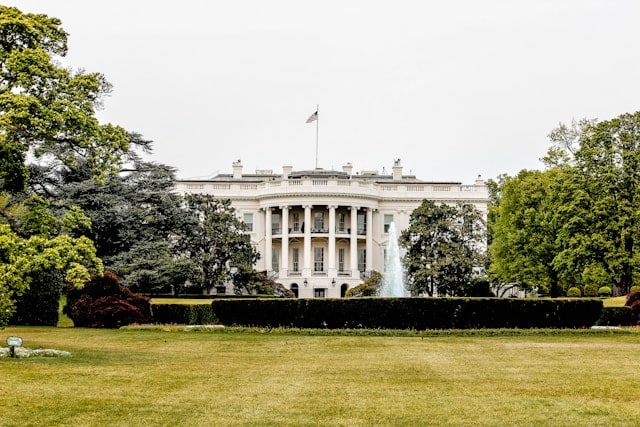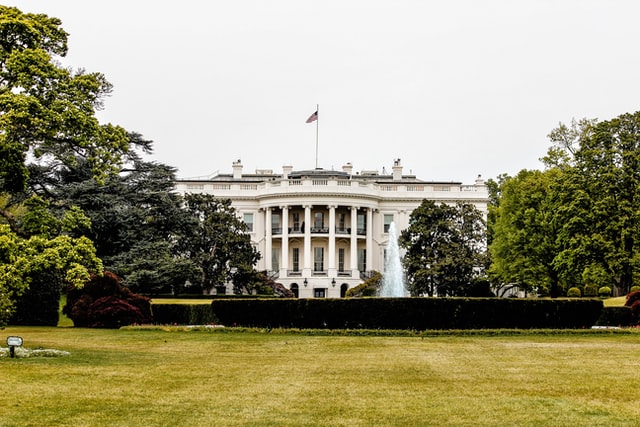From clinical trials to funding cuts: Here’s how changes at NIH are reshaping Alzheimer’s and dementia research.
As of September 2024, 495 clinical trials related to Alzheimer’s disease were being funded by the National Institutes of Health.
About 14 percent of these studies are concerned with pharmaceutical drug therapies (with about 2.5 percent are investigating beta-amyloid as an Alzheimer’s drug target). The remaining 86 percent? Those are all designed to better understand the causes of Alzheimer’s and factors that may help slow or prevent it. One third of all those NIH-backed Alzheimer’s trials are studying the efficacy of Alzheimer’s prevention, including looking at science-based lifestyle factors including sleep, exercise, and diet. The NIH provides the bulk of funding to pivotal series of studies like the Dominantly Inherited Alzheimer Network (DIAN) trials.
Headlines are flying and anxieties are mounting that changes enacted by the Trump administration may impact some of this research. And Alzheimer’s advocates and neuroscientists have been vocal in calling on Congress to protect funding, staffing, and federal infrastructure at large for research and treatment of Alzheimer’s and other diseases, especially after news of cuts of leadership and staff at the Roy Blunt Center for Alzheimer’s and Related Dementias.
So, it’s no wonder that letters have been coming in from Being Patient readers asking what’s going on with the Health and Human Services funding cuts and job terminations of employees across U.S. federal agencies.
People — both patients and scientists — who are directly involved in research aren’t sure what the future holds. And that’s stressful, says Marty Reiswig, a long-time Alzheimer’s research participant who carries a gene associated with a 50/50 chance of developing Alzheimer’s by age 50. Reiswig doesn’t currently have early-onset Alzheimer’s symptoms, but he’s been involved over the years in prevention research including the DIAN initial observational study, an early secondary prevention study with gantenerumab, and now also the open-label extension amyloid removal trial with Leqembi.
Reiswig knows that if his trial loses its funding, his potentially preventive infusions will come to a halt. And while he hasn’t heard anything definitive about that happening, he worries about it every day. So do other folks involved in the research, he told Being Patient. “I’ve been involved in this same study for over 15 years,” Reiswig said. “I’ve gotten to know some of these people [i.e., the researchers] and, yeah, they’re just kind of worried.”
Let’s get as clear a picture as possible with the information available.
What’s going on with U.S. brain health and Alzheimer’s science?
There are two main ways the Trump administration and its appointees are impacting U.S. scientific research infrastructure, including trials into brain health and neurodegenerative disease: 1) funding cuts, and 2) staffing cuts.
Here are key ways Alzheimer’s and dementia research are being affected as of March 17 2025:
| Changes issued by the Trump administration | Status of enactment |
|---|---|
| Cancellation and postponement of grant review meetings | Active, but abating. In late late January, meetings were canceled, while most external communications, travel, and spending were frozen. As of March 5, a small handful of meetings have so far been reinstated. They are closed to the public, according to .gov publication The Federal Register. |
| Job terminations, including abrupt dismissal of leadership and team members working in dementia research, clinical trial administration, and the FDA approval of devices involved in neurodegenerative disease diagnosis and treatment | Active. About 2,800 federal workers’ jobs have been terminated at the HHS as of late February. Further firings are temporarily blocked by a federal judge. A February 27 executive memo foreshadowed more downsizing to come. |
| The NIH has paused the renewal of contracts for staff scientists under Title 42, meaning many researchers who typically expect to have contracts renewed annually are losing their jobs. | Active. |
| The NIH has capped research grants’ administrative overhead to 15 percent. | Paused. Temporarily blocked by a U.S. court while the judge hears arguments on this proposal’s legality. |
| Defunding of some ongoing research effective immediately in line with the executive “DEI ban.” | Active. Some dementia researchers received letters from the NIA this week that their ongoing studies are suspended after receiving notices last week that their federal grants had been terminated. |
| Defunding of some U.S. Alzheimer’s disease research centers | Following an announced $65 million in cuts to Alzheimer’s research, federal funding for 14 of the U.S.’s 35 Alzheimer’s disease research centers will run out on April 30. |
Why is this happening?
There are three reasons the administration has given for all this freezing and downsizing:
- The Trump administration has stated that it aims to reduce the country’s $34 trillion debt by making dramatic cuts to jobs and spending across the federal government, from the Federal Aviation Administration, to the Department of Education, to the Social Security Administration and Internal Revenue Service, and beyond. This includes cuts to public health programs, including at Health and Human Services (HHS). (Health and Human Services is the umbrella agency over health-related departments including the Centers for Disease Control, which tracks and coordinates the national response to disease outbreaks, and the National Institutes of Health, the world’s largest funder of biomedical research.)
- The Trump administration issued an executive order in January to ban diversity, equity, inclusion, accessibility, or “environmental justice” in the federal government and across .gov websites on the basis that work pertaining to these concepts is “radical and wasteful.” This order encompasses initiatives to ensure diversity in some clinical research and funding is being permanently withdrawn from some dementia-related research in this category as of March 3.
- The newly appointed HHS Secretary Robert F. Kennedy Jr. has said he wants to overhaul the HHS and narrow the focus of federally funded scientific research.
These three factors are, together, playing an active role in changing the landscape of research in the U.S., both in the immediate and long term.
A new era at U.S. Health and Human Services
In January, controversy swirled around Robert F. Kennedy Jr.’s eventual appointment as the Trump administration’s HHS Secretary. Kennedy has been vocal about, among other things, his goals to “give drug development and infectious disease a break … for about eight years” and instead shift focus, to “study” non-pharmaceutical interventions for “chronic disease.”
The day after Kennedy took his post as HHS secretary, job cuts began across the department, along with a freeze on all external communications and funding. The dementia and Alzheimer’s space saw last-minute cancellation of months-in-the-making meetings meant to assemble dozens of brain health researchers and the upending of dementia study funding timelines. (The HHS did not respond to multiple requests for comment; the department’s top spokesperson abruptly resigned this month.)
What’s the deal with federal health and science jobs?
The job terminations and buy-out offers in February spurred many headlines — and vast confusion, for a number of reasons, including that some people were barred from discussing their terminations. Further complicating things: Agencies that had rashly terminated employees, in some cases, circled back to those people days or weeks later and asked to rehire them upon learning they were critical to operations, according to multiple sources interviewed by Being Patient.
In these mass job terminations, NIH senior leaders were forced to retire. The director of the Advanced Research Projects Agency for Health — an agency created three years ago to fund high-risk, high-payoff biomedical research to treat diseases and conditions including cognitive decline — was let go. Program directors at the National Institute of Neurological Disorders and Stroke were fired.
Cuts also occurred at the NIH’s CARD, which maintains a vast collection of post-mortem biological samples from people with various neurodegenerative diseases, like Alzheimer’s, as well as state-of-the-art equipment and world-leading experts to analyze the data.
“The value of that is almost incalculable,” a source at CARD told Being Patient. (The source spoke on the condition of anonymity, out of concern that interviewing would compromise their employment.)
Some of the research at CARD involves probing the genomes of thousands of people with Alzheimer’s disease to spot new genetic risk factors. This work allows scientists to develop treatments targeting previously unknown molecular pathways that contribute to the diseases. The staffing cuts here risk slowing “the next generation of [molecular] pathways and treatments” for neurodegenerative disease, the CARD researcher said. “Nobody else is really in a position to replicate” the work that was being done by people who were let go, he noted. (Multiple sources at the NIH did not respond to multiple requests for comment about cuts at CARD.)
Probationary workers and contractors are often the first workers to be cut when a company is downsizing. Kip Ludwig, an associate professor at the University of Wisconsin-Madison and the former NIH director of neural engineering in February saw “a number of people being laid off without any inquiry as to what they do from their supervisors, whether they’re good or bad employees, what the ramifications of immediately terminating them would be,” he told Being Patient. Ludwig’s analysis, at least among colleagues at the FDA. was that this initial round of job cuts impacted types of employees that were “legally easier to cut” based on the nature of their employment contracts — though the Trump administration does want to keep going.
The FDA is responsible for assessing medical devices and other diagnostics, a category that includes blood tests and brain-stimulating devices for neurodegenerative diseases. An estimated 1,000 of about 18,000 staff were let go in the February 2025 job cuts.
Some terminated HHS employees made the rounds to senate offices after their jobs were terminated, hoping to speak with senators about next steps, according to Allie Mitchell, a former Alzheimer’s clinical trials specialist at the NIH’s National Institute on Aging who received her termination letter on February 15. But in the halls of the capital building, these former government employees found no clear answers.
“I hope they heard us, person to person, human to human,” Mitchell said of her attempts to meet with congressional representatives. “We told them we were all federal workers just like you guys, but in a different field.”
What’s the deal with NIH grant funding?
Separate from job cuts, many studies are also losing their federal funding. The week of March 3, multiple researchers at institutions around the country began receiving notices from the National Institute on Aging — a federal hub of Alzheimer’s and dementia research — withdrawing their funding on the basis that these studies no longer align with “agency priorities.”
Alzheimer’s researcher Jace Flatt at the University of Nevada studies LGBTQ+ as a health disparity and was running well-rated research into why people from the LGBTQ+ have a higher likelihood of developing dementia. Among other intriguing findings, Flatt told Being Patient that the LGBTQ+ population are “more likely to have a college degree, which is actually supposed to be protective of dementia,” and this group also had also had lower rates of risk factors like blood pressure and diabetes — but higher rates of depression and post-traumatic stress disorder. Flatt’s team believes probing these links could help scientists get a clearer picture of dementia’s most influential risk factors across any population.
Yet, his team of scientists received a notice that their research grant was being suddenly discontinued. According to the notice, studies involving LGBTQ+ participants “have little identifiable return on investment, and do nothing to enhance the health of many Americans.” (Jeni Militano at the NIA’s office of grants and contracts management, who reportedly signed the letters, did not respond to multiple requests for comment.)
“A major part of it is NIH-funded, actually,” McDade
said of Alzheimer’s prevention trial DIAN-TU.
“So, it’s interesting times right now.”
Meanwhile, the pause that the HHS enacted in late January, freezing reviews of proposals for new grant funding, was originally set to last one week. It is still gradually lifting.
According to David Super, a professor at Georgetown University Law Center, Congress set up a publication called the Federal Register to make federal research more transparent and enacted the Federal Advisory Committee Act. “The Act requires that advisory committees meet in public so that the public or journalists can attend and listen to the discussion,” Super told Being Patient. “To ensure that people can attend, meetings must be published in advance in the Federal Register.” In January and February, meetings could not be published, so grants could not be awarded. But between March 4 and March 7, the first of seven new NIH meetings since January were posted to the Register.
“These postings are good news,” Super wrote to Being Patient when these postings first appeared. “Continuing to withhold them was a flagrant violation of the court orders against the funding freeze. Obviously this only changes things if NIH goes through the rest of the process and funds worthy proposals.”
Will U.S. dementia and brain health research see more cuts?
Two pledges by the NIH, if carried out, do guarantee further downsizing of U.S. research infrastructure:
- In February, the NIH paused the renewal of contracts for thousands of senior staff scientists under Title 42.
- Also in February, the NIH announced a cut to research grants’ administrative overhead — the “indirect costs” of conducting research, including administrative staff — to a cap of 15 percent. At leading research universities, like Harvard, Yale, and Johns Hopkins, this equates to an estimated 75-percent reduction in the amount of funding to staff administrative and support jobs. The NIH declared this cut to be “effective immediately.”
The declaration may have been rash: Despite the announcement, U.S. courts have temporarily blocked the order to slash funding over questions of its constitutionality. Whether these official orders do or do not go into effect is now in the hands of lawyers. The fact that these orders were decreed, and then paused, leaves many Americans — including many researchers and trial participants — in limbo.
Researchers heading Alzheimer’s trials — like Eric McDade, principle investigator at the DIAN-TU Primary Prevention trial, part of the family of trials in which Marty Reiswig is involved — aren’t quite sure what’s coming next. “A major part of it is NIH-funded, actually,” McDade said of DIAN-TU. Funding is on a five-year cycle, and he just heard that the grant review scheduled for this week has been postponed. If it’s not reviewed by May, he said, the trial will have to attempt to pivot to some new mix of philanthropic and pharmaceutical partner funding sources. “So, it’s interesting times right now.”
While many firings have already been carried out, further firings have been temporarily halted by courts, for now: In late February, U.S. District Judge William Alsup ruled that the firings may be illegal on the basis that laws protect U.S. government agencies’ rights to hire and fire their own people; the Office of Personnel Management had no jurisdiction to dismiss contractors or employees.
“The new administration is not honoring legally binding NIH research grants/contracts for science to address Alzheimer’s,” Ludwig told Being Patient. The Trump administration maintains that their cost-cutting government overhaul — including cuts to Alzheimer’s and dementia research — is “putting an end to wasteful spending.”
Additional reporting by Simon Spichak and Andrew Saintsing.
CORRECTION April 2, 2025, 5:39 P.M. ET: This article was updated to correct an error: Marty Reiswig’s daughter is not involved in the research.






DEI is the purist form of racism. As scientist your hiring and promotional criteria should fundamentally reject race and emphasize merit. Social and political norms are usually at odds with Science.
For one thing, meeting gender and racial diversity benchmarks in scientific research is essential to ensuring drug safety and efficacy. We explain how here: https://www.beingpatient.com/trump-dei-ban-alzheimers-research-clinical-trials/
Mickey, I am old enough to have been told than women who became doctors were taking a spot that men should rightfully have. That was from my HS biology teacher, who acknowledged that I was the brightest student in the class. I gave up my plans to become a doctor–but still work alongside researchers from many backgrounds to prevent, delay and treat Alzheimer’s–all of whom got their positions on merit AND with support for diverse, equitable and inclusive research. If you live outside a major metro area, it’s highly likely some research was targeting your ‘underserved” community. Until now.
I have recently been diagnosed with Alzheimer’s, and my children’s father died of early onset Alzheimer’s. Our children have a chance of inheriting it from both parents, with a 50% of inheriting it from their father alone. I am totally incensed with Trump’s decision to cut funding for research. It’s too late for us to benefit, but not for the children! Who knows how many Americans carry the gene and don’t know it until they’re diagnosed? My children are in their mid-40s now – it may not be too late for them!
Hi Connie, thank you for being here. We understand how deeply personal and urgent this feels, especially when thinking about the next generation. You might find our interactive feature ‘Generations of Impact’ useful which explores the lives of two women affected by familial Alzheimer’s – one living with the diagnosis, and the other living with a high-risk gene. Feel free to check it out here: https://www.beingpatient.com/interactive-feature-generations-of-impact-alzheimers/?utm_source=organic&utm_medium=social – take care.